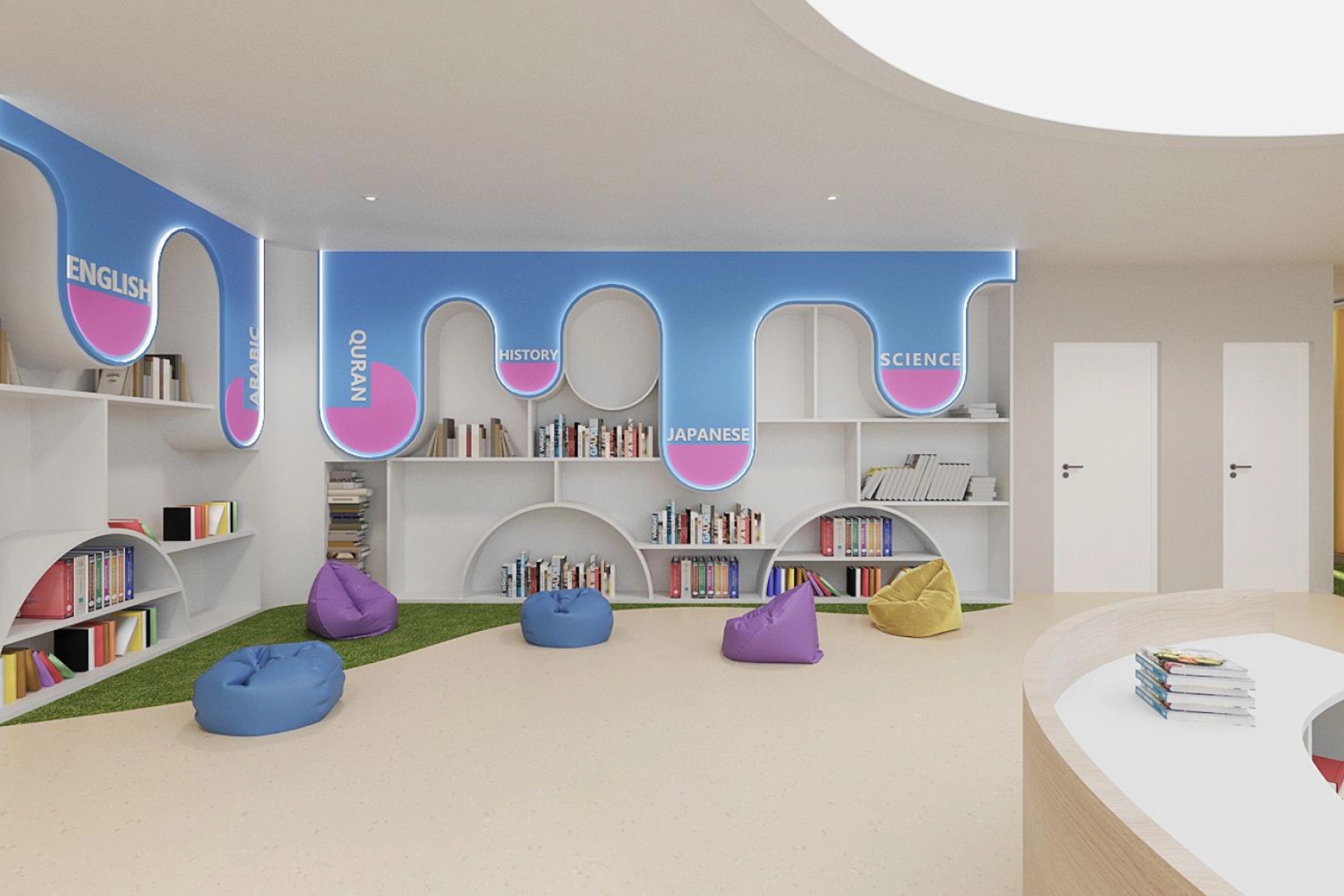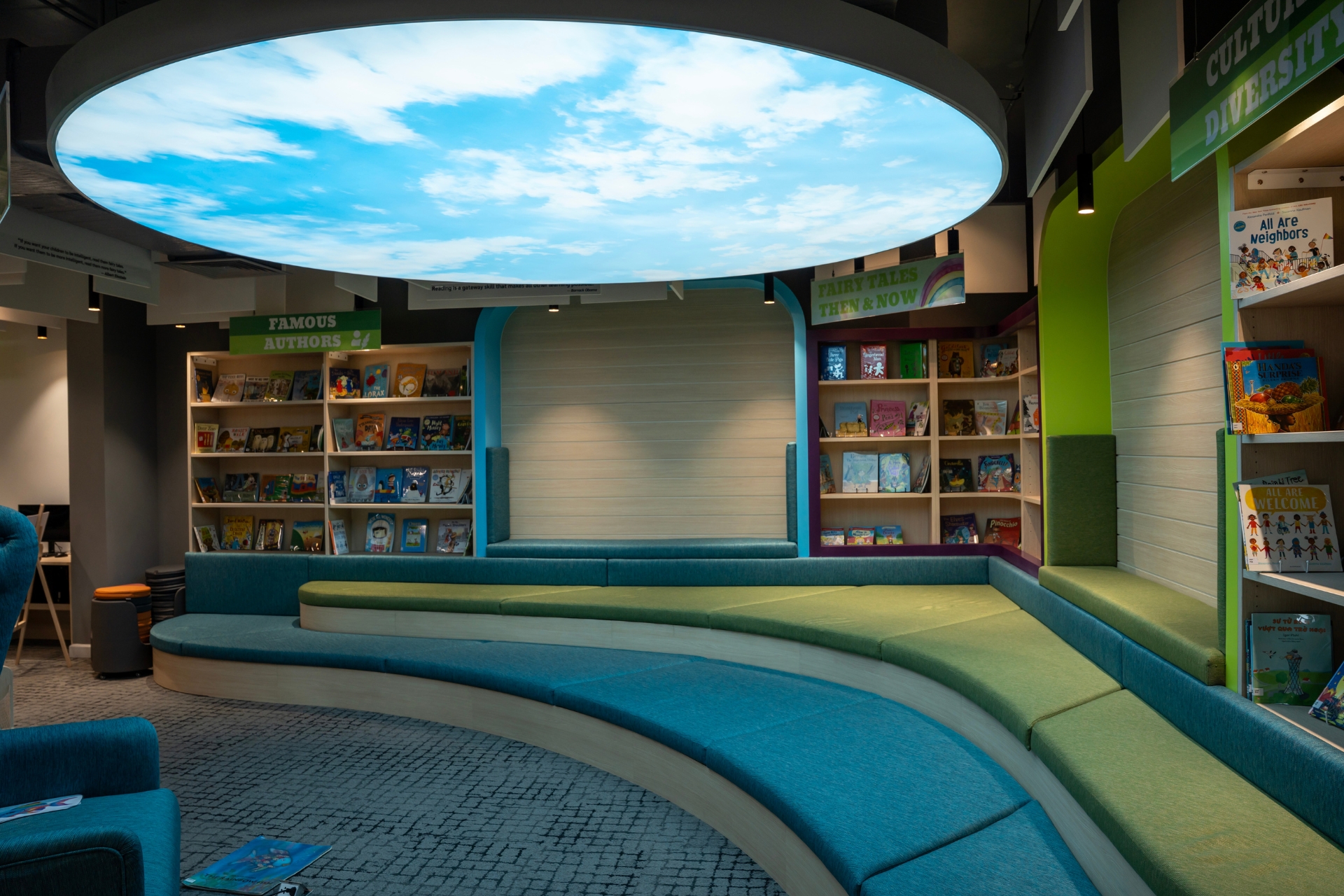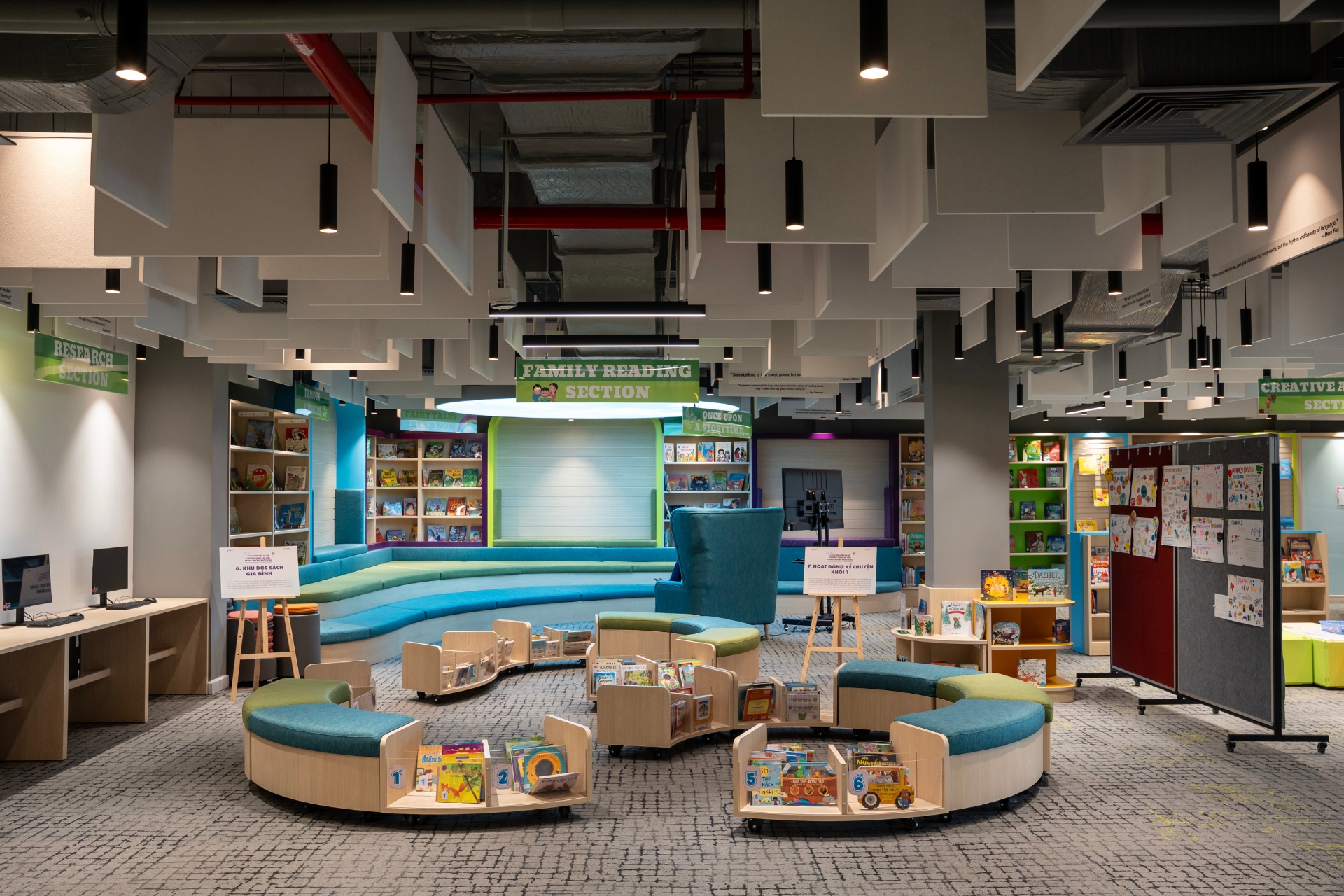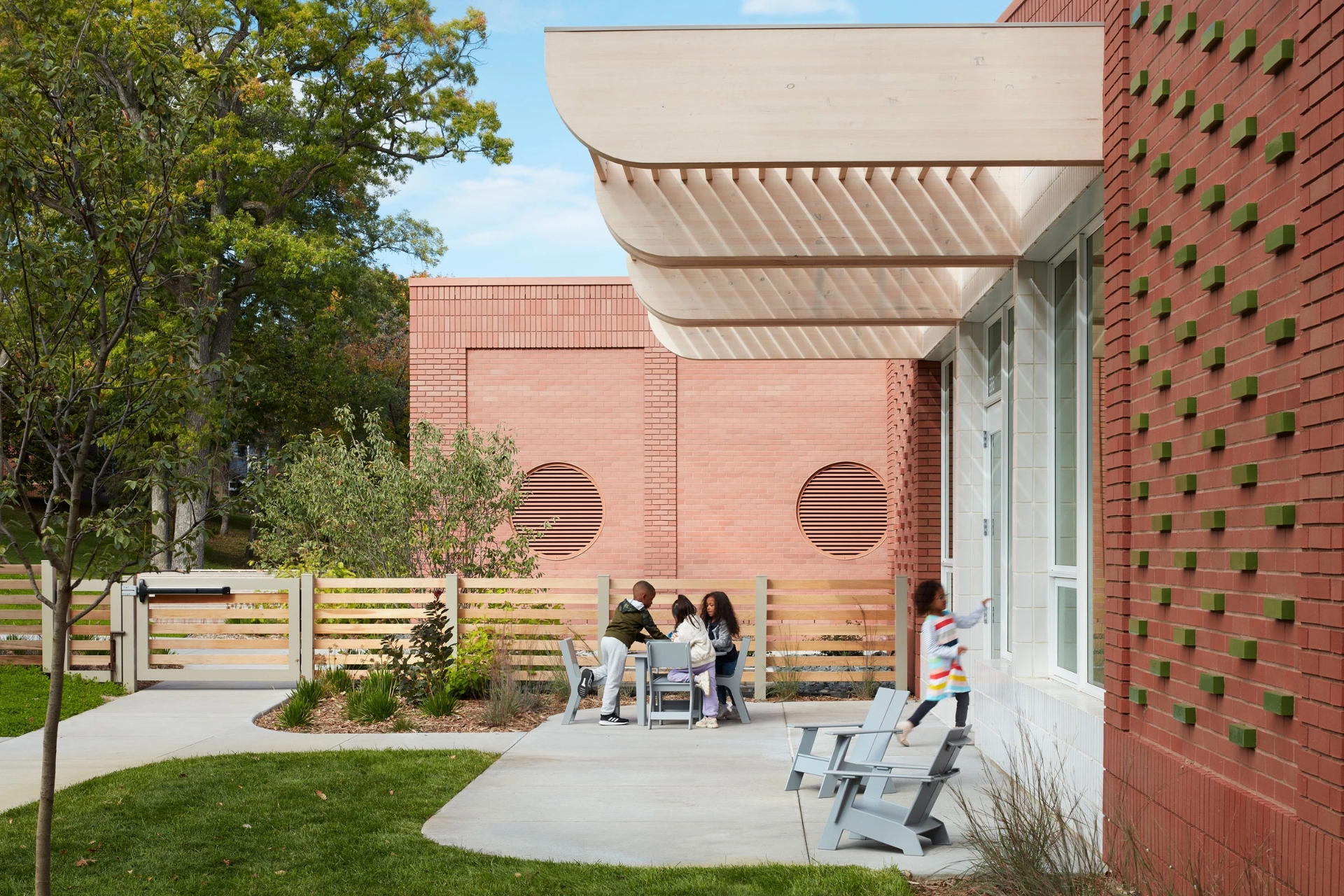
How is green architecture applied in international school design?
In the trend of modern education, beyond functional design elements, international school design must also meet other criteria such as environmental friendliness, energy efficiency, and long-term sustainability. In that context, green architecture has become an important trend in international school design. TECO invites you to explore everything about the green architecture trend and how to effectively apply it in educational environments.
What is the concept of green architecture?
Green architecture is defined as architecture that uses design techniques, technological solutions, materials, and energy sources to create a green building. Moreover, such a project must be environmentally friendly and use resources efficiently throughout its entire lifecycle.
In the context of educational buildings, a hallmark of green architecture is designing the learning space as a miniature ecosystem, where humans, plants, air, and light coexist and interact harmoniously.
This is not only a trend but also considered a long-term development strategy in modern education. More than just a place for teaching, international schools are living spaces – for learning – for holistic development in terms of physical health, wellness, and spirit for students.
Green design in international schools
Current green architecture standards
Currently, there are many international systems for evaluating and certifying green buildings. Below are some of the standards commonly used in international school design:
-
LEED (Leadership in Energy and Environmental Design): Developed by the U.S. Green Building Council, this standard evaluates based on factors such as energy efficiency, water use, green materials, and indoor environmental quality.
-
LOTUS: A green building certification system in Vietnam developed by the VGBC (Vietnam Green Building Council). This standard has been adjusted to suit Vietnam’s climate and construction environment.
-
BCA Green Mark: A Singaporean standard, emphasizing resource-saving capabilities and operating cost efficiency.
These standards were created to ensure transparency, professionalism, and environmental effectiveness of the projects. Besides these, there are also other green architecture certification systems such as EDGE, Green Star (Australia), WELL (USA), Green Globes (USA), etc.
Benefits of applying green architecture in international school design
Green architecture brings many long-term benefits across various aspects of education and human development.
1. Enhancing student health and learning performance
A green learning space with natural light, proper ventilation, and non-toxic materials significantly improves classroom air quality, reduces respiratory issues and fatigue, and increases student concentration.
2. Optimizing long-term operational costs
By using energy-saving devices, smart lighting systems, and water reuse solutions, schools can significantly reduce monthly utility costs, improving investment efficiency.
3. Educating students about sustainable development
The learning space itself becomes a vivid lesson in environmental responsibility. Growing up in a green environment helps students develop an awareness of conservation, a love for nature, and a sustainable lifestyle.
Green architecture in school design contributes to educating students on environmental protection awareness.
4. Enhancing the school’s brand value
Schools that apply green architecture clearly demonstrate their commitment to the community, parents, and society in providing quality education integrated with environmental responsibility. This is particularly important amid the growing competition among international schools. As a result, the brand image is strengthened, more beloved, and gains a competitive edge.
Applying green architecture in school design
Several measures can be applied to implement green architecture in international school design:
1. Optimize natural light and ventilation
Arrange classrooms to face directions that catch natural wind and light, and apply power-saving technologies while still ensuring sufficient lighting for teaching and learning. This helps reduce dependence on air conditioning and electric lighting.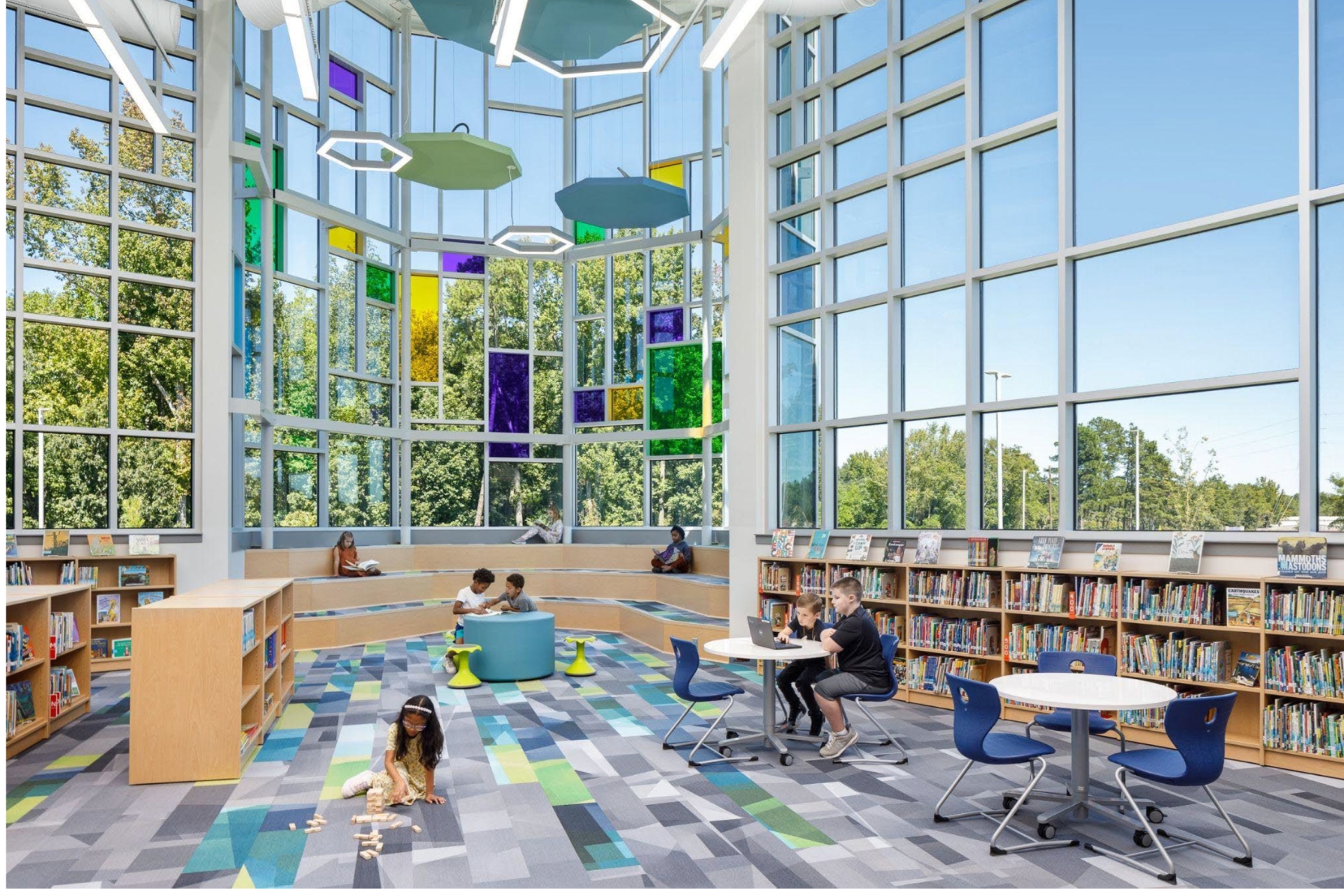
Optimizing space layout to maximize natural lighting
2. Create ample green areas within the learning space
Harmoniously arrange greenery in classrooms, courtyards, etc., to make the school environment greener. This not only helps regulate the air but also gives students more opportunities to interact with nature. Learning and playing every day under green spaces helps students be more active, relaxed, and well-rounded in development.
3. Use environmentally friendly materials
This is an indispensable solution in applying the green architecture model. Recycled wood, non-fired bricks, VOC-free paints, and insulating glass are considered green – quality – sustainable materials that should be prioritized. Besides minimizing environmental impact, they also help ensure the health of students and teachers.
Designs that use eco-friendly materials and furnishings
4. Design open spaces connected to nature
Specifically, this can include flexible learning spaces such as outdoor playgrounds, ecological gardens, and outdoor group study areas. These enhance students’ interaction with nature and inspire creativity.
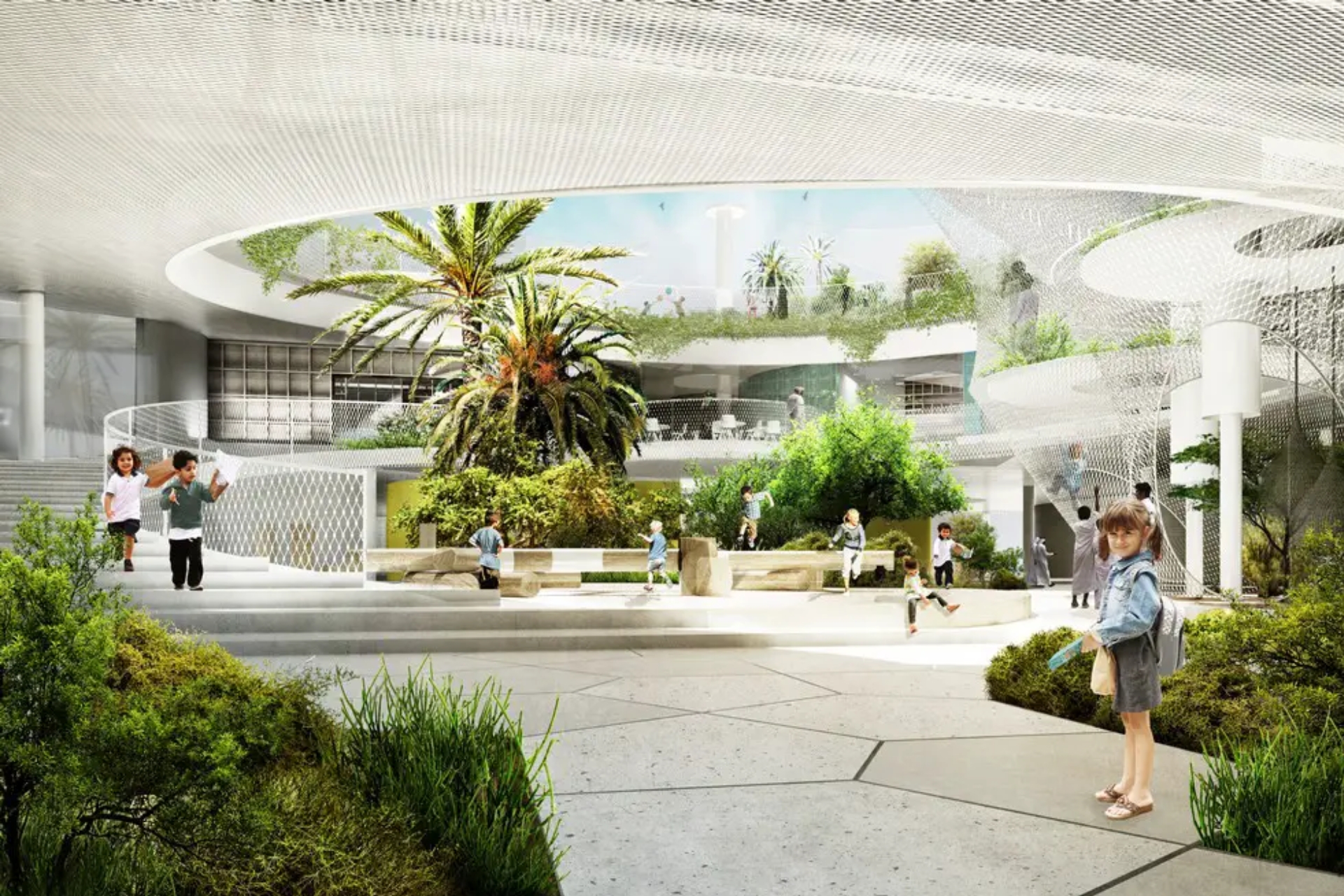
Open educational spaces connected with the outside natural environment
5. Integrate energy-saving technology
Install solar power systems, high-efficiency central air conditioning, motion-sensor LED lighting, etc., to significantly reduce energy consumption.
Additionally, many other solutions can be integrated to create a green space for international schools, providing an ideal environment to nurture the development of future generations.
Conclusion
Green architecture is not just a trend but is gradually becoming a standard in international school design. A school designed with green principles will serve as a sustainable foundation to nurture global citizens – those with progressive thinking, environmental awareness, and strong adaptability in a changing world.
Green architecture is considered an inevitable trend of our time, not only in international school design but also across all architectural projects. Together, we strive toward a greener, more sustainable future. TECO hopes that through this article, investors, contractors, architects, and others have gained more valuable insights into this inevitable global trend.

